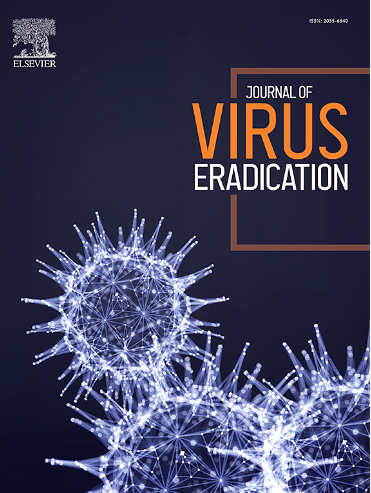2-脱氧葡萄糖作为ebv相关胃癌的治疗策略:缺氧条件下糖酵解和裂解再激活抑制
IF 2
4区 医学
Q2 IMMUNOLOGY
引用次数: 0
摘要
eb病毒相关性胃癌(EBVaGC)是一种独特的胃癌亚型,约占所有胃癌病例的10%。2-脱氧葡萄糖(2-DG)是一种糖酵解抑制剂,已成为癌症治疗的重要工具。然而,2-DG对EBVaGC和ebv阴性胃癌(EBVnGC)的差异作用尚不完全清楚。在这项研究中,我们证明了2-DG抑制AGS和AGS- ebv细胞的增殖,AGS- ebv细胞表现出更大的敏感性,特别是在缺氧条件下。此外,研究发现EBV感染通过hif -1α依赖机制上调AGS-EBV细胞中糖酵解基因的表达,特别是在缺氧条件下。值得注意的是,2-DG还能抑制AGS-EBV细胞在缺氧条件下的EBV裂解再激活。这些发现为ebv介导的代谢重编程的分子机制提供了有价值的见解,并突出了2-DG作为EBVaGC治疗剂的潜力。本文章由计算机程序翻译,如有差异,请以英文原文为准。
2-Deoxyglucose as a therapeutic strategy for EBV-associated gastric carcinoma: Glycolytic and lytic reactivation inhibition under hypoxic conditions
Epstein–Barr virus-associated gastric carcinoma (EBVaGC), a distinct subtype of gastric cancer, accounts for approximately 10 % of all gastric cancer cases. 2-deoxyglucose (2-DG), a glycolysis inhibitor, has emerged as a crucial tool in cancer therapy. However, the differential effects of 2-DG on EBVaGC and EBV-negative gastric carcinoma (EBVnGC) are not yet fully understood. In this study, we demonstrated that 2-DG inhibited the proliferation of both AGS and AGS-EBV cells, with AGS-EBV cells exhibiting greater sensitivity, particularly under hypoxic conditions. Furthermore, EBV infection was found to upregulate glycolytic gene expression in AGS-EBV cells, particularly under hypoxic conditions, through HIF-1α-dependent mechanisms. Notably, 2-DG also inhibited EBV lytic reactivation in AGS-EBV cells under hypoxic conditions. These findings provide valuable insights into the molecular mechanisms of EBV-mediated metabolic reprogramming and highlight the potential of 2-DG as a therapeutic agent for EBVaGC.
求助全文
通过发布文献求助,成功后即可免费获取论文全文。
去求助
来源期刊

Journal of Virus Eradication
Medicine-Public Health, Environmental and Occupational Health
CiteScore
6.10
自引率
1.80%
发文量
28
审稿时长
39 weeks
期刊介绍:
The Journal of Virus Eradication aims to provide a specialist, open-access forum to publish work in the rapidly developing field of virus eradication. The Journal covers all human viruses, in the context of new therapeutic strategies, as well as societal eradication of viral infections with preventive interventions.
The Journal is aimed at the international community involved in the prevention and management of viral infections. It provides an academic forum for the publication of original research into viral reservoirs, viral persistence and virus eradication and ultimately development of cures.
The Journal not only publishes original research, but provides an opportunity for opinions, reviews, case studies and comments on the published literature. It focusses on evidence-based medicine as the major thrust in the successful management of viral infections.The Journal encompasses virological, immunological, epidemiological, modelling, pharmacological, pre-clinical and in vitro, as well as clinical, data including but not limited to drugs, immunotherapy and gene therapy. It is an important source of information on the development of vaccine programs and preventative measures aimed at virus eradication.
 求助内容:
求助内容: 应助结果提醒方式:
应助结果提醒方式:


